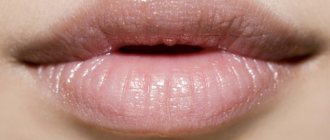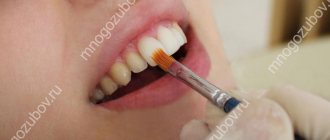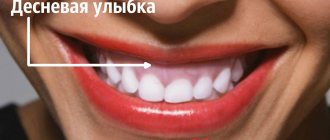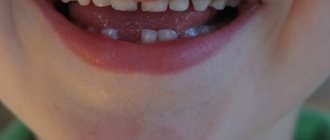How do you know if your smile is beautiful and natural?
It is easy to distinguish a natural smile from a forced one if a person has not worked on his facial muscles and has not practiced smiling in front of a mirror. Each of us has at least once encountered a situation when there is no reason to smile, but it is worth smiling out of politeness. To understand whether your smiling face looks open, you need to turn to your thoughts: if you are gloomy at heart, it is unlikely that the joy on your face will not be strained. For a smile to be charming and open, you need to think about the things that cause it in a normal situation, and if you do this often, a natural smile will become a habit, and pleasant thoughts will improve your mood.
A smile will brighten the day
The more often you smile, the easier it becomes to do so. After all, the main secret to a good smile is regular practice.
We hope residents of foreign countries will be able to achieve this skill. If a person does not smile there, others perceive him as an ill-mannered rude person.
In addition, “on duty” smiles also benefit the facial muscles, making them more mobile.
If you smile forcedly, do not be surprised at the result, which will clearly be disappointing. Correct facial expressions require constant training.
Causes of anomalies
Let's look at the main reasons why defects occur:
- Genetic factor. Mesial and distal occlusion are most often inherited. For parents, knowing about the high risk of such a defect occurring in their child, it is easier to control treatment in childhood, during the formation of the maxillofacial system.
- Developmental anomalies in the prenatal period. Various pregnancy pathologies can often affect the formation of the fetal dental system.
- Birth injury. Mesial occlusion is caused by displacement or dislocation of the baby's lower jaw during difficult childbirth.
- “Wrong” habits in childhood. These include constant pacifier or finger sucking, improper nipple latching, and improper sucking during bottle feeding. If the hole in the nipple is too large, the child’s lower jaw practically does not work when sucking and remains undeveloped.
- Frequent sinusitis and rhinitis, due to which the child constantly breathes through his mouth. With such breathing, the development of facial bones is disrupted.
- Violation of tooth change. Early removal of baby teeth often causes abnormal maxillofacial development.
- Incorrect prosthetics, lack of prosthetics.
- Hypertonicity of the masticatory muscles due to stress provokes abrasion of the incisors and displacement of the jaws.
- Various injuries of the maxillofacial area.
Example 6. The charm of a teenage smile
But I met this patient when he was very young, a teenager. When you carry out orthodontic treatment at a younger age, you have a certain responsibility that you are giving him a smile that will accompany him throughout his life and which he will probably live up to. And when he was still very little, when he came, his smile was very modest, closed, shy.
And the boy himself was so shy. And during the process of orthodontic treatment (it took us about a year and a half), the boy grew, became an increasingly mature young man, and at the end of the treatment he had a simply amazing smile!
He began to take more care of himself. He showed masculine charm: look at his hairstyle and styling. Growing up and moving to high school began. Ahead - all the first dates, adolescence)
Could I imagine that he would reveal the potential of his smile so much during treatment?
It was actually an experiment, because when you start orthodontic treatment, you already know in advance what kind of smile a person will have, because as an orthodontist, I model all this, build the treatment. But no matter what the patient will become after orthodontic treatment, and what his emotions will be like, it is never possible to predict.
That is, as a doctor, I make certain prerequisites and give him a “field for activity,” and then he himself begins to reveal his smile potential. And when a person’s smile becomes beautiful, wide, charming, and when the patient begins to further transform himself, then everything together gives him self-confidence and, let’s say, an excellent open future for global achievements.
So the young man became a stately, elegant young man!
Like in a fairy tale, the “ugly duckling” turned into a prince. And this is great!
How you can learn to smile beautifully depending on your face type
Any expression of emotion changes the face in the same way as successful makeup or the right wardrobe. Therefore, it is worth taking this issue seriously, especially in business relationships.
If you have a long face, pay special attention to the vertical aspect of your teeth . Try not to smile too widely - others may perceive this as aggression.
On the contrary, a wide smile suits people with a square or round face.
With its help, the outlines visually become more oval and “correct”. An “on duty” smile (with the mouth closed) will be perceived by people with this type of face as excessive modesty.
But people with the correct oval are lucky in this regard - both the “on duty” smile with the mouth closed and the wide Hollywood one will be perceived equally well by others.
Watch your lips
It's no secret that when you smile, it is your lips that attract the most attention. Therefore, it is very important that they are not chapped or bitten. Be sure to use lip moisturizers, and in winter regularly smear with balms or hygienic lipstick.
Don't forget to pay attention to your lip makeup. Try not to use too bright lipstick, especially if you have thin lips - otherwise they will visually become even thinner. It is better to choose products in natural colors, with shine. Products with menthol help to slightly enlarge lips and make them plumper and seductive.
What is a smile from a physiological point of view?
These are contractions of the facial muscles, in particular the cheeks, lips and eyes, and when you smile, the number of muscles involved is less than when you frown. A smile expresses a good mood, pleasure, an ironic state, fun, and also a greeting. Have you noticed that it is difficult for you not to start smiling when you notice that a friend is coming towards you? :) Also, a smile is the best way to fill an awkward pause in a conversation or avoid answering a stupid question.
So a smile is a multifunctional facial and social tool, and every social person should learn to smile beautifully. Usually this is developed naturally, but we are ready to give you some practical tips that really work.
Why can't people smile?
Maria Yakovleva, orthodontist:
I often ask myself the question: “Why don’t people know how to smile”? And I answer: “Because they are shy.” They are embarrassed by an ugly smile, they are embarrassed by crooked teeth, they don’t like something about themselves, it all comes from people’s internal complexes.
When patients come to see me for the first time, I immediately determine that their smile can be much better.
This is already the so-called “professional deformation” (in the good sense of the word) of the brain, when, starting from the threshold of the door, when they walk in, patients greet you, or when I greet a person, I smile a little, because this is a gesture of greeting. And I, as an orthodontist, already know: “Yeah, I see, he’s probably worried about this and that.”
Exercises for a beautiful smile
Yes! And you can train your smile too! After all, muscles also work here, the same red fibers that make the cubes on your stomach, biceps, triceps, and so on.
These exercises must be done systematically to get good results:
- In front of the mirror, determine which facial expression gives you the most beautiful smile. Hold it for 10 seconds, then relax your face. Return to the smiling expression for another 10 seconds, then relax. Do this 7-10 times.
- Purse your lips tightly, then stretch them forward, as if you decided to express everything to a nasty person from the distant past. Do this up to 15 times. Here we are working on lip flexibility.
- Take in as much air as your lungs can, exhale gradually through tightly compressed lips. Repeat 20 times. Here we work on the flexibility and symmetry of the lips.
- If the bottom row of teeth is a little weak, try to hide them a little behind a happy smile. Smile “from ear to ear”, then return your lips to the ideal position and hold. Relax your face, then repeat the same thing again. Here we are working on the topic of how to make your smile wider.
- Close your lips tightly, stretch them forward, and try to draw the number “eight” in the air with your lips. Then relax. Repeat up to 5 times.
- Smile really, really hard. Then relax. Repeat this 10 times.
You will definitely succeed and in the photo your smile will shine with new colors!











